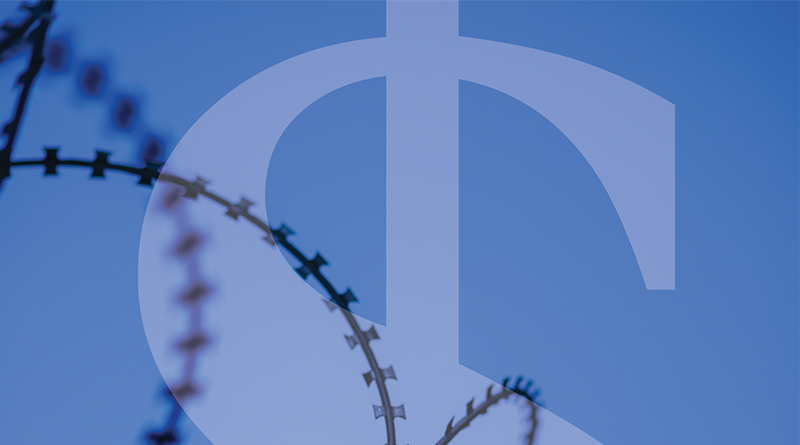Is ‘Doing Time’ Money for Private Prisons?
By Daedalus Howell
As those in the corrections industry know all too well, the debate regarding private prisons versus public facilities has long been divisive, and this article hopes to illuminate some of the nuances of this complex issue.
So, here goes…The adage that “time is money” may have practical application for those running private prisons and those “doing time.”
Inmates in private prisons appear to serve 4 to 7 percent additional fractions of their sentences, which amounts to 60 to 90 days for the average inmate, according to a paper released by Anita Mukherjee, Ph.D., an assistant professor of actuarial science, risk management and insurance at the University of Wisconsin-Madison’s Wisconsin School of Business.
“For perspective, the average inmate serves about 70 percent of his sentence, so I’m finding — on average — that inmates in public prisons serve 68 percent of their sentences versus about 74 percent in private prisons,” observed Mukherjee, who added that some may assume that “worse” inmates were assigned to private prisons and would have served more time anyway.

But that isn’t the case — in her study, entitled “Impacts of Private Prison Contracting on Inmate Time Served and Recidivism,” Mukherjee controlled for the possible non-random assignment of inmates to private versus public prisons using private prison openings and closings. Essentially, whenever private prisons open or close, large numbers of inmates are moved into or out of these prisons — and they are selected randomly.
Mukherjee’s work is the first to review “time served” as a distinct factor in the public versus private prison conversation and raises questions about why the phenomenon occurs and who benefits from it. It’s important to note that private prisons have no authority to extend sentences and that release decisions are made by public authority.
So, why are inmates in privately operated facilities doing more time? The reason for their delayed release appears to be linked to the widespread use of conduct violations. In fact, as Mukherjee found, inmates in private prison are 15 percent more likely to receive conduct violations.
“This may happen because private prison guards are more likely to report bad behavior or because conditions in private prison are worse [or] ‘too hot,’” said Mukherjee, who cited evidence of this from a panoply of ACLU lawsuits.
The elephant in the cell, of course, is that private prisons potentially have a financial incentive to maximize the number of days served by inmates, since they’re compensated for having heads in beds as it were. This may not align with the interest of the inmates, the state or taxpayers. Moreover, private prisons may likewise cut costs to elevate profits, suggested Alex Friedmann, an associate director of the Human Rights Defense Center, managing editor of Prison Legal News and a national expert on the private prison industry.
Among the private prison companies Friedmann has studied in this regard are Nashville, Tenn.-based CoreCivic (formerly the Corrections Corporation of America), which has owned and managed private prisons and detention centers since 1983, and its Florida-based competitor GEO Group. Together the companies run a combined 170 prisons and detention centers, representing the bulk of a nearly $2 billion industry, according to a 2016 report filed by The Guardian. As a self-described “activist shareholder,” Friedmann owns stock in both companies and has testified before legislative committees on both the state and federal level on private prison-related issues.
Interestingly, Friedmann has also served sentences for armed robbery, assault, attempt to commit first-degree murder and attempted aggravated robbery, which puts him in a unique position to understand the inmate experience. Moreover, Friedmann served his time at two facilities in Tennessee that are identical in terms of design and population type but one, Northwest Correctional Complex, is state-run and the other, South Central Correctional Facility, was operated by CoreCivic under its former brand name CCA. This puts Friedmann in the rare position to make an apples-to-apples assessment of a public versus private prison — from the inside.
“There were significantly higher numbers of staff — boots on the ground — at the state-run prison than the private prison,” said Friedmann, who was released in 1999. Besides, saving on staff costs, the facility would ration basic amenities.
“There was rationing of toilet paper — we were constantly running out of toilet paper and blankets,” Friedmann recalled. “The state would give you two blankets and CCA would give you one blanket. The winters in Tennessee can get pretty brutally cold. I had a corner cell for many years, and I would have ice form on the inside of the window.”
The budget-conscious company culture seemed to be reinforced or at least incentivized at the time by an employee stock ownership program. Friedmann recalled that there was a sign outside of the administrative building at South Central Correctional Facility that indicated the company’s stock price on the New York Stock Exchange. The use of inmate labor was another means by which CoreCivic pursued greater profitability in Friedmann’s observation. Some of this work had security implications, however — like having inmates string razor wire to designing the fire evacuation diagram, which Friedmann was personally assigned. “They gave me the layout plans for all the buildings in the facility, including the administrative building,” he said. “There is still a lot of security there, but you probably don’t want to give an inmate the floor plan layout of the administrative building.”
Friedman and others who were computer savvy were also tasked with tracking the failures of the perimeter motion detector fence alarm. “You probably don’t want inmates doing that, but it’s cheaper — it’s free,” said Friedmann. “That’s the underlying theme here, that inmate labor is basically free, and if you’re a private company and have to pay people to do this, that’s just money out of your pocket.”
Representatives for CoreCivic did not respond to requests for comment.
To read the entire article, check out the March/April issue of Correctional News.

